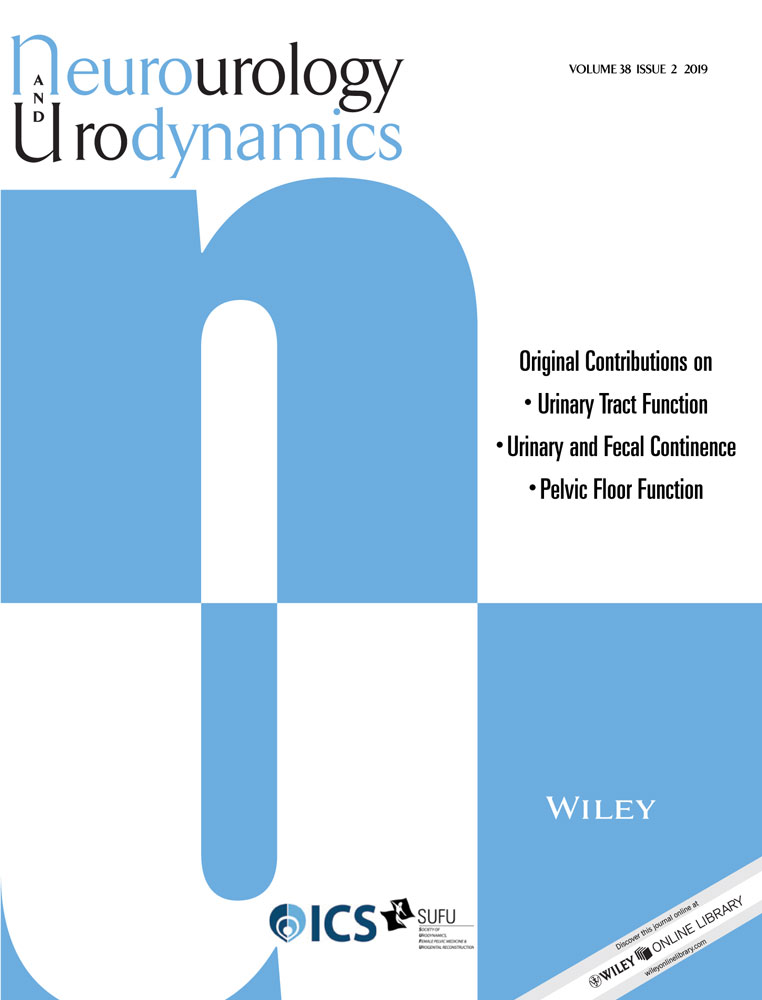The vaginal distention model in mice is not a reliable model of simulated birth trauma-induced stress urinary incontinence
Abstract
Aims
Vaginal distention (VD) is a validated model of birth-related trauma in rats. Recently a mouse VD model was reported. Our study was originally conducted to evaluate the impact of age on VD in mice. This manuscript describes the study and reports on the lack of reproducibility of VD models in mice.
Methods
We utilized female C57BL/6 mice. A total of 190, 12-weeks old mice, were randomized into VD and sham groups. We inflated a modified Foley's balloon with 0.3 mL for 1 h inside the mice vagina. Afterwards, we measured the leak point pressure (LPP) at defined timepoints (0, 4, 10, 20, or 40 days). We randomized another 190, 40-week old, C57BL/6 mice into either VD or sham groups. We used an extra 20 mice as age − matched controls.
Results
In both 12 and 40 weeks-old mice, LPP was significantly decreased versus the negative controls at day 0. Additionally, in both 12 and 40 weeks-old mice, the decrease in LPP was significantly higher in the VD group compared to the sham group at day 0. However, the LPP results were comparable between VD and sham at any other time point thereafter. Furthermore, there was no significant change in LPP values between instrumented (VD and sham) mice and control mice at any time after day 0.
Conclusions
The VD models previously described is not a reproducible model for the study of VD with large number of mice. Our results, unfortunately, do not support its use to study VD injury in mice.




